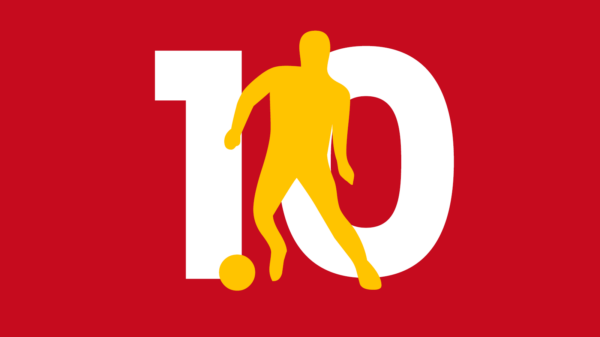Ross Eaton analyses Granada’s 2-1 loss at home to Athletic Bilbao in the La Liga
Paco Jemez’s sixth game in charge of Granada was sure to be a tough task, despite Athletic Bilbao’s relatively poor start to the season, they remain a strong team and a difficult opposition to face. Tactically, both sides have had their issues in possession, though without the ball exciting principles have been used to good effect at times. At the Estadio Nuevo Los Cármenes Athletic Bilbao travelled to face Granada in La Liga.

Granada (4-4-1-1): 1. Ochoa, 22. Foulquier, 5. Agbo, 3. Gaston Silva, 2. Tito, 4. Samper, 26. Angban, 16. Carcela-Gonzalez, 23. Bueno, 18. Pereira, 24. Kravets
Athletic Bilbao (4-2-3-1): 26. Arrizabalaga. 15. Lekue, 16. Etxeita, 4. Laporte, 24. Balenziaga, 7. Benat, 6. San Jose, 14. Susaeta, 22. Garcia, 10. Muniain, 20. Adruiz
Granada used a fairly standard 4-4-1-1 formation. Mexican Guillermo Ochoa was the goalkeeper. Foulquier right of defence, with Agbo and Gaston Silva in the centre, Tito as left-back. Sergi Samper and Victorien Angban played as 6/8’s in the centre, with Carcela-Gonzalez and Pereira as the wingers. Alberto Bueno played as a second striker behind Kravets.
A similar formation was chosen by Valverde for Athletic to line-up in. Arrizabalaga as GK. A back-four consistent of Lekue, Etxeita, Laporte and Balenziaga. Protecting them was a double-pivot of Etxebarria and Mikel San Jose. As the right and left wingers were Susaeta and Muniain. Raul Garcia operated as a false 10. Whilst Aritz Aduriz was the number 9.
Pressing Dynamics
As seen and extensively covered by a number of sites, most notably on Spielverlagerung, Atheltic Bilbao have utilised a high press in their matches this season, seeing it go to good effect largely.
Atheltic started from a fairly standard 4-4-2 when beginning to press high, usually when Granada’s centre-backs received the ball in phase one or two. Operating in a zonal man-orientated system, Aduriz and Garcia marked and pressed Agbo and Silva, usually in the halfspaces, Susaeta and Muniain defended high in their wing, usually on the opposition full-backs, whilst Etxebarria and San Jose would be positioned either the centre of the halfspace, depending on the positioning of Angban and Samper, though making horizontal ball-orientated shifts to maintain compactness if the ball was switched sides.
Constantly making ball-orientated shifts, whilst retaining their zonal-man orientation, Atheltic usually managed to successfully create defensive access high up the pitch, particularly on the outer halfspaces and wings, where specific pressing dynamics could be used.

These specific pressing dynamics were firstly, a direct attempt to win the ball back high up, in an area where a scoring chance could potentially be created from, but secondly, in the case of Granada escaping the original press and moving the ball into another area, maintaining strong access on the ball with the aim of the first objective of regaining possession in a dangerous area. This was done through creating a pressing trap.
Aduriz arcs his pressing movements to block a pass to the goalkeeper and force an ineffective phase one pass to the ball-near full-back. The ball-near winger quickly engages in press here, either stealing the ball or forcing a pass into the congested centre where Atheltic’s central midfielders will shift over to close the space and make it more difficult for Granada to escape or effectively progress through this zone.
Atheltic’s pressing was effective in terms of making it difficult for Granada to progress cleanly, particularly through the central six spaces where Angban and Samper were marked out of the uild-up.
Jemez’s Granada without the ball started from a similar base formation as their opponent’s, though as Athletic began to build in phase one, the dynamics of the pressing shape were very different. With Athletic’s 6’s alternating the role of dropping between the split centre-backs to create a situational three man backline, Atheltic put a heavy focus on combining to find the free man in defence to carry forward. In order to prevent this Granada adopted a relatively strict man-orientation, particularly the central midfielders. Samper marked Etxebarria, Angban-San Jose. Whenever their respective men dropped, they would follow to create a situational front three to press with.

Despite this front three pressing causing Athletic a number of problems in utilising ‘La Volpe’ to great effect, their phase one not being as smooth as Valverde would have liked, Granada also encountered a number of problems arising from it too. If the non-dropping defensive midfielder of Atheltic chose to move forward and occupy an 8/10 space close to Raul Garcia, this forced Granada’s non-pressing central midfielder to defend these space in a 1-v-2 situation. Though it was difficult for Atheltic to progress effectively through here, the few times they did, they had space between Granada’s lines due to the poor vertical compactness.
Weak Occupation of the Central Spaces Leads to Poor Progression
One notable absence from Jemez’s side is Juego de Posición. With Paco Jemez being one of the few true disciplines of Juego de Posició, after implementing it nicely at Rayo Vallecano, it is somewhat surprising that he doesn’t seem to have made an attempt to implement it so far at Granada. One issue in this match was their poor spatial occupation, particularly in the central zones and 10 space.
The closest player to a number 10 was Bueno, who played slightly behind Kravets. He operated more as a second striker though and occupied the Athletic backline in positions close to Kravets. From here, Bueno would feed off Kravets knockdowns, which was something frequently done by Granada. This became an issue, as rather than attempting to occupy advanced midfield positions and find space between lines to offer a smoother option to escape Atheltic’s press, which Angban and Samper didn’t occupy, Bueno would constantly position himself very close to Kravets. Kravets made himself the target for long balls, which became Granada’s key outlet for escaping Atheltic’s high press.
Conclusion
In a match of some intriguing pressing from both sides, the vivid issues each team encountered in possession, largely down to lack of press resistance in the backlines, both collectively and individually, unfortunate shone through and equalled to a relatively scrappy football match in terms of technical quality.
Read all our Tactical Analyses here.
- Tactical Analysis: Nice 4-0 Monaco | Favre’s efficient approach - September 14, 2017
- Tactical Analysis: Australia 2-3 Germany | German Defensive Scheme - June 22, 2017
- Tactical Analysis: Napoli 1-3 Real Madrid | Napoli unable to shift momentum - March 9, 2017


























































